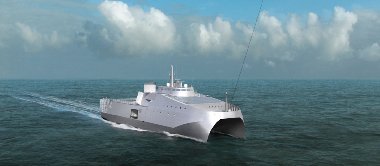Reymond, Solveig (2015) Internalisation de nanoparticules de fer par des macrophages pour l'amélioration du traitement du glioblastome PFE - Projet de fin d'études, ENSTA.
Fichier(s) associé(s) à ce document :
| PDF 27Mb |
Résumé
Rationale: An alternate approach for the improvement of radiotherapy consists in increasing differentially the radiation dose between tumors and normal tissues using nanoparticles (NPs) that have been beforehand internalized into the tumor. These high-Z NPs can be photo-activated by monochromatic synchrotron X-rays, leading to a local dose enhancement delivered to the neighboring tumor cells. This enhancement is due to secondary and Auger electrons expelled from the NPs by the radiations. In order to carry the NPs into the tumor center, macrophages are currently under study for their phagocytosis and diapedesis abilities. In this project, we characterized J774A.1 macrophages’ internalization kinetics and subcellular distribution of iron NPs. Methods: Three aspects of internalization were examined: first, the location of internalized NPs in cells was determined using J774A.1 macrophages and F98 glioblastoma cells from ATCC. After a 24h incubation with iron NPs, the cells were washed and fixed for imaging. Optical microscopy was performed after cell slicing. Then, the iron intake after a 24h incubation with NPs was characterized for the two types of cells using ICP-MS. Finally, the internalization dynamics were studied: F98 internalizing NPs were observed by live phase-contrast microscopy imagining. Besides, NPs were injected in 96-well plates where J774A.1 were grown. Each hour, 4 wells were washed and absorbance, \textit{i.e.} the iron mass retained in cells, was measured at 450 nm using a plate reader. Results: F98 tumor cells and J774A.1 macrophages are both able of endocytosing NPs: we measured ~61±10 pg of internalized iron per macrophage compared with ~33±5 pg per tumor cell (initial iron concentration: 0.3 mg/mL in culture medium). F98 internalizing NPs for 10 hours showed some stress signs during the first minutes after the NPs injection, but behaved like F98 control cells during the rest of the experiment. Finally, we determined that the internalization kinetics for J774A.1 had a six-hour saturation typical time. Conclusion: Macrophages seem to be promising vectors for NPs, being able to endocytose and retain in their cytoplasm larger quantities of NPs than tumor cells. Our following studies will attempt to shed light on their other potential abilities as “Trojan Horses”.
| Type de document: | Rapport ou mémoire (PFE - Projet de fin d'études) |
|---|---|
| Mots-clés libres: | Macrophages ; Nanoparticles ; Synchrotron ; Radiotherapy ; Blood-Brain Barrier ; Drug delivery ; Cell-carriers |
| Sujets: | Sciences de la vie et ingénierie du vivant Physique, optique |
| Code ID : | 6607 |
| Déposé par : | Solveig REYMOND |
| Déposé le : | 12 mai 2016 10:00 |
| Dernière modification: | 12 mai 2016 10:00 |








